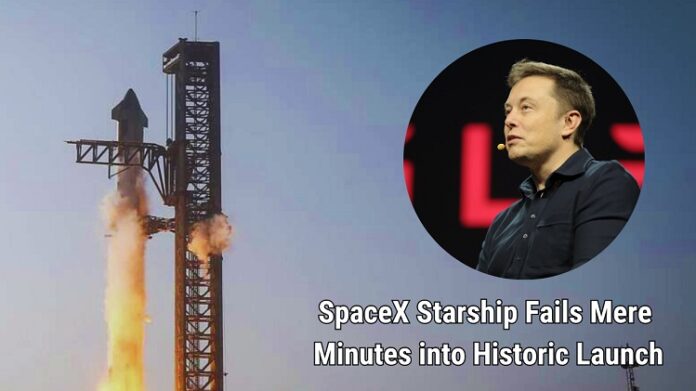| Translate This News In |
|---|
BOCA CHICA, Texas – SpaceX Starship, in its pursuit of innovation, embraces the possibility of rockets encountering failures during the early phases of development. This approach stands in stark contrast to the traditional method employed by NASA. While NASA focuses on meticulous design, extensive ground testing, and years of preparation for a single rocket launch, SpaceX adopts a more dynamic strategy.
The company swiftly constructs new prototypes, readily subjecting them to rigorous testing, as there is often a spare rocket available. This willingness to push prototypes to their limits is a fundamental aspect of SpaceX’s methodology.
During a recent visit to SpaceX’s facilities, the distinctive approach became evident. Four Starship spacecraft and at least two Super Heavy boosters were visible from public roadways, showcasing the rapid pace of prototype development and testing at the company.
A unique aspect of SpaceX’s rocket launches is the enthusiastic engagement of its hardcore fans. While most spectators observed the recent Starship rocket launch from South Padre Island, approximately 5 miles away, a dedicated group of fans gathered at a site named Rocket Ranch.
Positioned near the launchpad off Boca Chica Highway, Rocket Ranch serves as a haven for SpaceX enthusiasts. The site’s proximity required patrons to sign waivers acknowledging the potential risks associated with viewing rocket launches from such close quarters.
Rocket Ranch’s managing partner, Anthony Gomez, played a key role in organizing the experience for dozens of campers and SpaceX fans. Due to road closures around the launch site, attendees had to travel by bus from the camping ground to the viewing site on the night before the launch.
The location’s proximity to the launchpad necessitated the signing of waivers by patrons, underscoring the inherent risks associated with the endeavor.
As the excitement built up, the fans at Rocket Ranch prepared for the launch by making fajitas overnight. The countdown to the launch was marked by growing anticipation and rowdy cheers from the crowd.
According to Gomez, the sound of the engines reverberated through the spectators, creating an emotional experience. Tears flowed as the crowd embraced the significance of the moment, recognizing the strides being made in Boca Chica toward advancing space exploration.
However, the recent launch of SpaceX’s uncrewed spacecraft Starship encountered challenges. The two-stage rocket, designed to carry astronauts to the moon and beyond, experienced a presumed failure during its second test, following an explosion in the first attempt.
The Super Heavy first stage booster, despite appearing to execute a critical maneuver to separate from the core Starship stage, exploded over the Gulf of Mexico after detachment. Contact with the core Starship booster was lost, raising questions about the mission’s success.
The U.S. Federal Aviation Administration confirmed the mishap, leading to the initiation of a SpaceX-led investigation. The mission aimed to launch SpaceX Starship from Texas into space, just short of reaching orbit, and then splash down off Hawaii’s coast.
Despite setbacks, SpaceX emphasized the value of learning from such tests to enhance the reliability of the Starship.
Elon Musk, SpaceX’s founder, envisions Starship as a pivotal element in the company’s ambitious goals. Beyond supporting NASA’s human spaceflight program, Artemis, SpaceX Starship is envisioned as a potential replacement for SpaceX’s workhorse Falcon 9 rocket.
The success of SpaceX Starship is crucial for Musk’s broader vision of making life multiplanetary and facilitating human exploration of the moon and Mars.
NASA, SpaceX’s primary customer, has a significant interest in Starship’s success. The U.S. space agency sees SpaceX Starship playing a central role in its Artemis program, succeeding the Apollo missions. Despite challenges, SpaceX remains committed to investing heavily in Starship, with Musk stating that the company spent $2 billion on its development in a single year.
The recent SpaceX Starship’ launch highlighted the complexities of rocket development, acknowledging both successes and failures. SpaceX’s commitment to continuous improvement is evident in the various enhancements made for the second test. Changes include reinforcing the self-destruct system, adopting a hot staging strategy, improving the Super Heavy booster, and upgrading the launchpad to avoid a repeat of the previous explosion that damaged the pad.
The challenges faced by SpaceX Starship, while significant, have not deterred its business momentum. The company continues to dominate the market for launching commercial satellites, thanks to past innovations such as a vertically landing first stage. Despite setbacks, SpaceX’s business resilience remains strong, as noted by Chris Quilty, the president of Quilty Space, who believes that the recent test won’t significantly impact the company.
Looking ahead, the success of SpaceX’s ambitious Starship project remains a crucial objective. While acknowledging the importance of eventual success, experts wonder about the threshold for tolerating failures.
The balance between SpaceX’s grand ambitions and the practicalities of achieving successful rocket launches raises questions about how much leeway the company can afford in its pursuit of groundbreaking space exploration technologies.
As SpaceX Starship continues to push the boundaries of space travel, the world watches with anticipation to see how these challenges will shape the future of space exploration.


















